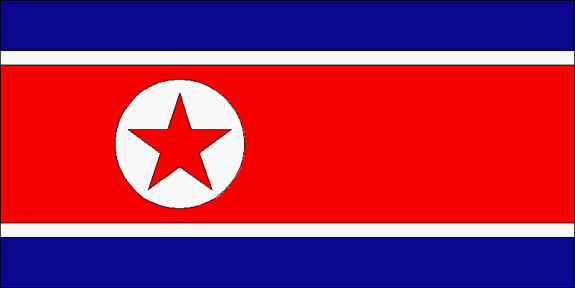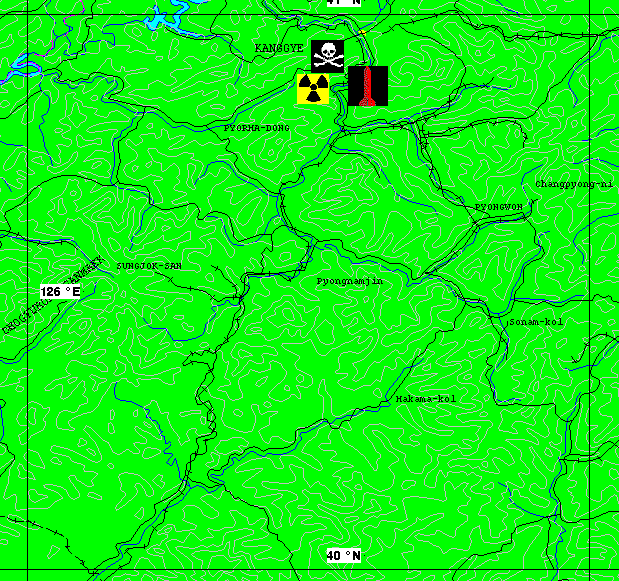





"Kanggye No.26 General Plant" is the largest underground facility in North Korea and approximately 20 thousand workers manufacture all sorts of missiles, rockets, torpedoes, antisubmarine depth bombs, and land mines.
According to Choi Ju-hwal, who in 1995 defected from his post as Colonel and Chief of joint venture section of Yung-Seong Trading Company under the Ministry of People's Army, missile production facilities include Number 26 Factory in Kanggye of Chagangdo Province [Kangkye of Jakangdo].North Korea has at least four research and development facilities supporting work on chemical agents, although the status and types of munitions are uncertain. Presumably one or more of the agents [sarin, tabun, phosgene, adamsite, prussic acid and a family of mustard gases] comprising the basis of North Korean chemical weapons are developed at the Kanggye Chemical Factories, probably including blood and blister agents. Kanggye is apparently one of two primary chemical munition assembly facilities, with the other being located at Sakchu.
According to defector reports of uncertain reliability, underground facilities in Chagang Province are for manufacturing nuclear warheads or storing plutonium. The facilities are near Kanggye and Huichon-up in Tongsin County. Each tunnel said to be large enough for two trucks to pass side by side. A narrow-gauge railroad is reportedly in place at the entrance of the tunnels to remove earth and sand from the tunneling. The Third Bureau of Engineers, a military unit under the party Central Committee that specializes in building nuclear facilities, is said to be responsible for the construction activity. There are a number of munitions plants in Chagang Province, and the area may have chosen to assemble special weapons with parts manufactured at adjacent munitions plants.


